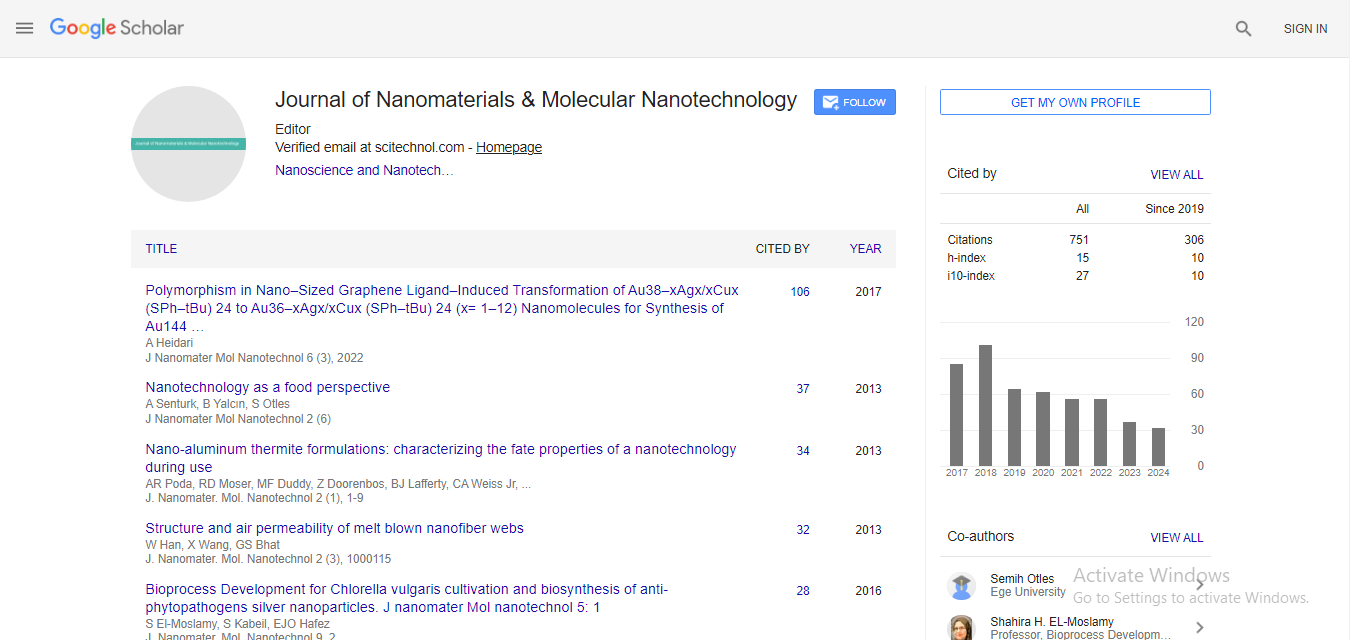Polyurethane/hydroxyapatite/magnetite composites for biomedical applications
Katarzyna Nowicka, Aleksanda Gejdel and Kinga Pielichowska
AGH University of Science and Technology, Poland
: J Nanomater Mol Nanotechnol
Abstract
Polyurethanes are important class of polymers widely used in biomedical applications. One of the key problems is the preparation of composites for potential use in bone tissue engineering. Additive of hydroxyapatite (HAp) enhances bonding with living tissues when implanted. The most common magnetic thermoseed material for hyperthermia is magnetite (Fe3O4) that possesses an inverse spinel structure. Polym(methyl metacrylate)/Fe3O4 based bone cements have been developed and investigated, however there are still unsolved problems with acrylic bone cements. In our studies polyurethane-based bone cements modified with hydroxyapatite and magnetite have been proposed as a potential new polymeric bone cements. The polyurethane/magnetite/hydroxyapatite nanocomposites have been prepared in a one-step bulk polymerization process. Poly(ethylene glycol) (PEG) with average molar mass 2000 was used as a soft segment, 1,4-butanediol (BDO) as a chain extender, sodium alginate as crosslinker and 1,6-hexamethylene diisocyanate (HDI) as hard segment components in stoichiometric amounts. The chemical structure of obtained nanocomposites was confirmed by using FTIR. Moreover, FTIR analysis indicates that inorganic nanoparticles were chemically bonded to polyurethane macrochains. Xâ€Âray diffraction analysis results show the presence of magnetite and hydroxyapatite in the polyurethane matrix. From TG (Thermogravimetric) and DSC (Differential scanning colorimetry) data, it can be concluded about the influence of magnetite and HAp on thermal stability and glass transition region of polyurethane matrix. SEM results show that the inorganic particles in the polyurethane/magnetite/ hydroxyapatite nanocomposites were dispersed homogeneously in the polymer matrix. Investigations of compressive strength confirmed that the obtained nanocomposites exhibited acceptable mechanical properties for applications as bone cements. Recent Publications: 1. Marzec M et al. (2017) Development of polyurethanes for bone repair. Materials Science & Engineering C. 80:736-747. 2. Xu C et al. (2016) Synthesis and characterization of conductive, biodegradable, elastomeric polyurethanes for biomedical applications. Journal of Biomedical Materials Research Part A. 104(9):2305-2314. 3. K Lin and J Chang (2015) Structure and properties of hydroxyapatite for biomedical applications. In Hydroxyapatite (Hap) for Biomedical Applications. 3-19. Doi:10.1016/B978-1-78242-033-0.00001-8. 4. Ghazanfari M R et al. (2016) Perspective of Fe3O4 nanoparticles role in biomedical applications. Biochemistry Research International. 2016:1-32. 5. Kawashita M, Kawamura K and Li Z (2010) PMMA-based bone cements containing magnetite particles for the hyperthermia of cancer. Acta Biomaterialia. 6(8):3187-3192.
Biography
Katarzyna Nowicka has experience in the preparation and testing of polymeric composite materials modified with magnetic nanoparticles. Her elevate experience during her PhD studies, studying composite materials based on biodegradable and biostable polymers modified with magnetite nanoparticles. She studied mechanical, magnetic, structural and surface morphologies. She also analyzed the results of cytotoxicity and degradation studies in vitro. nowicka@agh.edu.pl`
 Spanish
Spanish  Chinese
Chinese  Russian
Russian  German
German  French
French  Japanese
Japanese  Portuguese
Portuguese  Hindi
Hindi 



